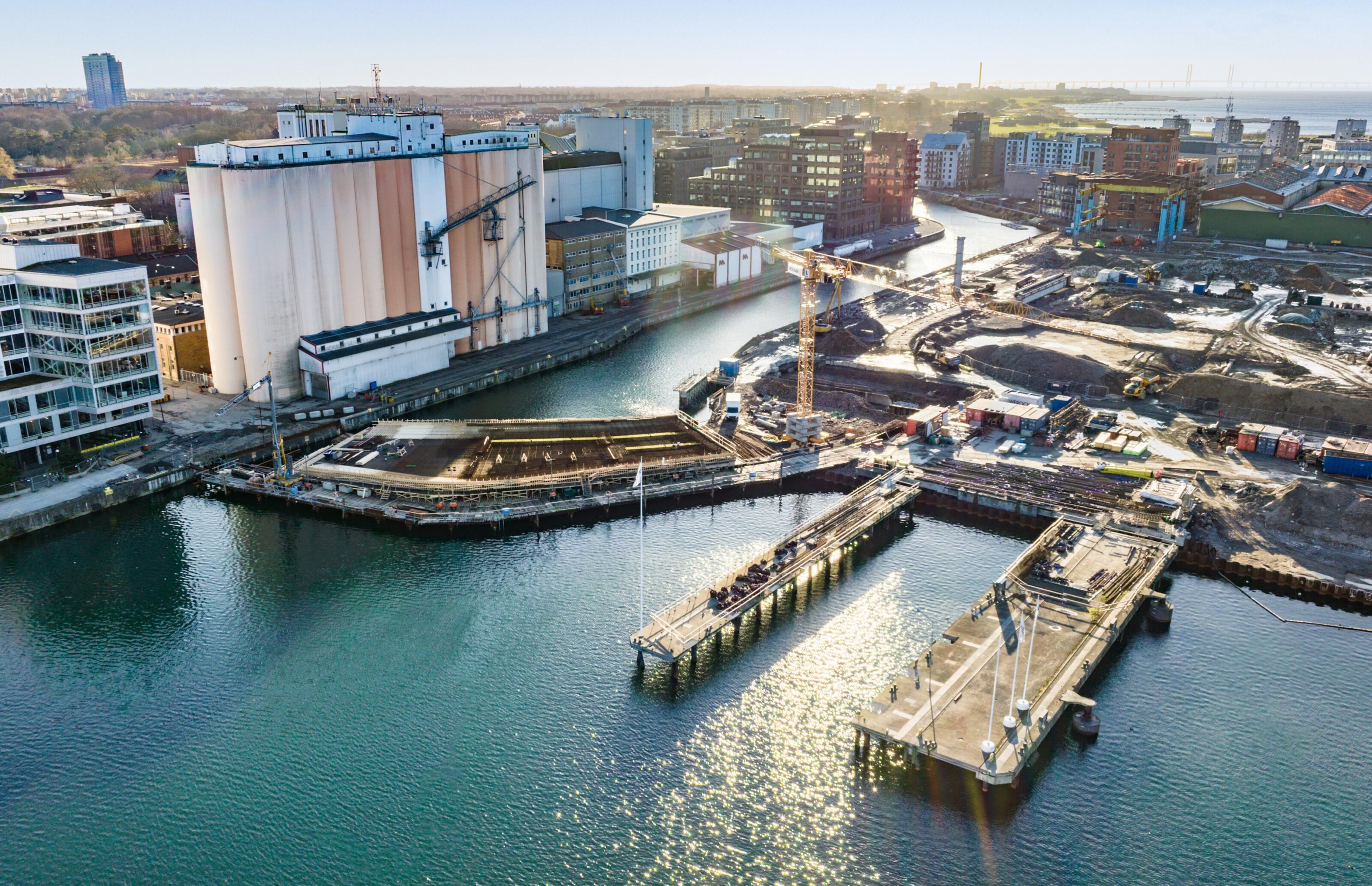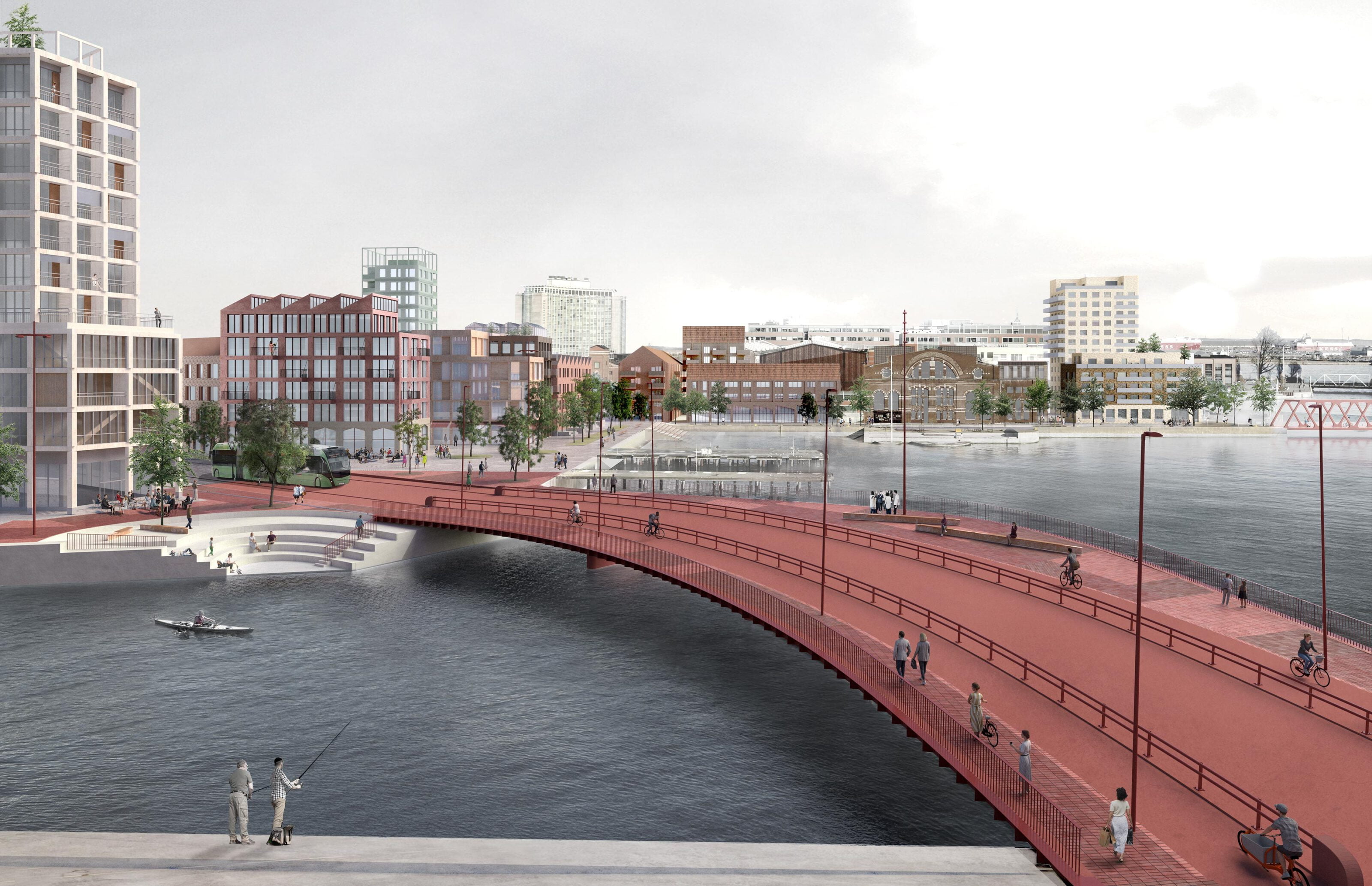
Styrmansbron
A new bridge for pedestrians, cyclists and public transport is being planned for central Malmö to connect the inner city to the emerging Varvstaden district. The formerly industrial area plays and important role as a link between the city centre and the Västra Hamnen neighbourhood, as well as a vital element of Malmö’s identity. The 180,000 sq km of the former Kockum’s shipyard area comprises several culturally valuable and listed buildings. Kjellander Sjöberg has won the invited competition organized by Malmö City to design the bridge in a team with the London-based bridge engineer Ian Firth and structural engineers from Sweco Civil.
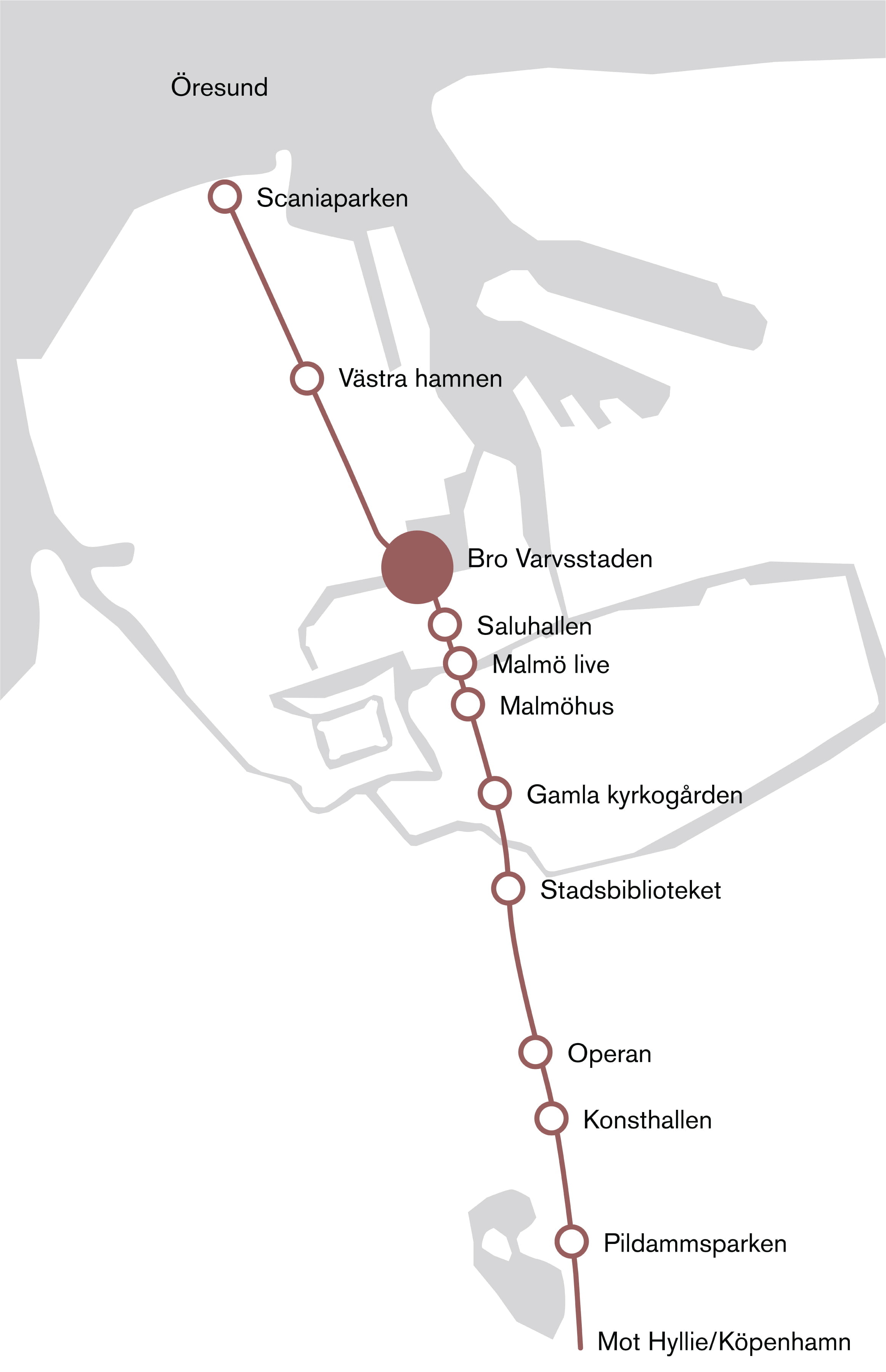
Part of Malmö’s backbone
The bridge is an important element within the council’s strategy to connect Varvstaden with its surroundings. It is also one of the three new bridges to interconnect the area’s quays and important main routes. It will become a part in a chain of public spaces, parks, and important buildings, stretching from Hyllie to Scaniaparken and the harbour. A sequence of spaces highlighting Malmö’s qualities and uniting its characters.

”The winning proposal is strongly anchored within the place. Through interesting work with colour, form and impression, the proposal presented a bridge that will, with its design and function, become something more than just a bridge.”
Hanne Birk, Varvsstaden
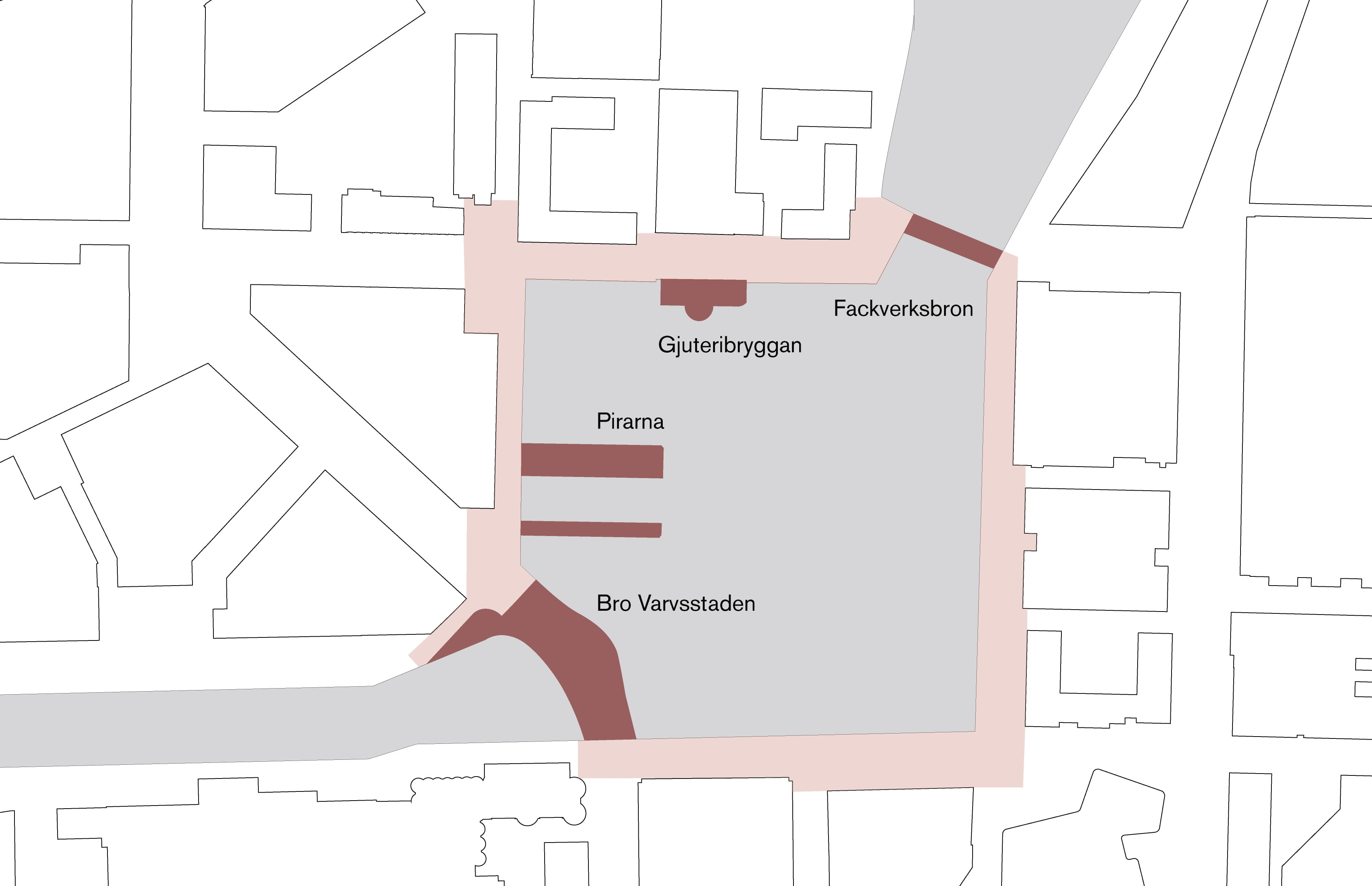
New context around the Varvstaden’s basin
The bridge sets to become an integral part of the urban fabric, a welcome addition to the public space, currently being upgraded, intensified, and densified with new buildings and rich content. The water is made accessible by new additions, greenery and placemaking, focusing on spaces for meetings, recreation, and urban life.

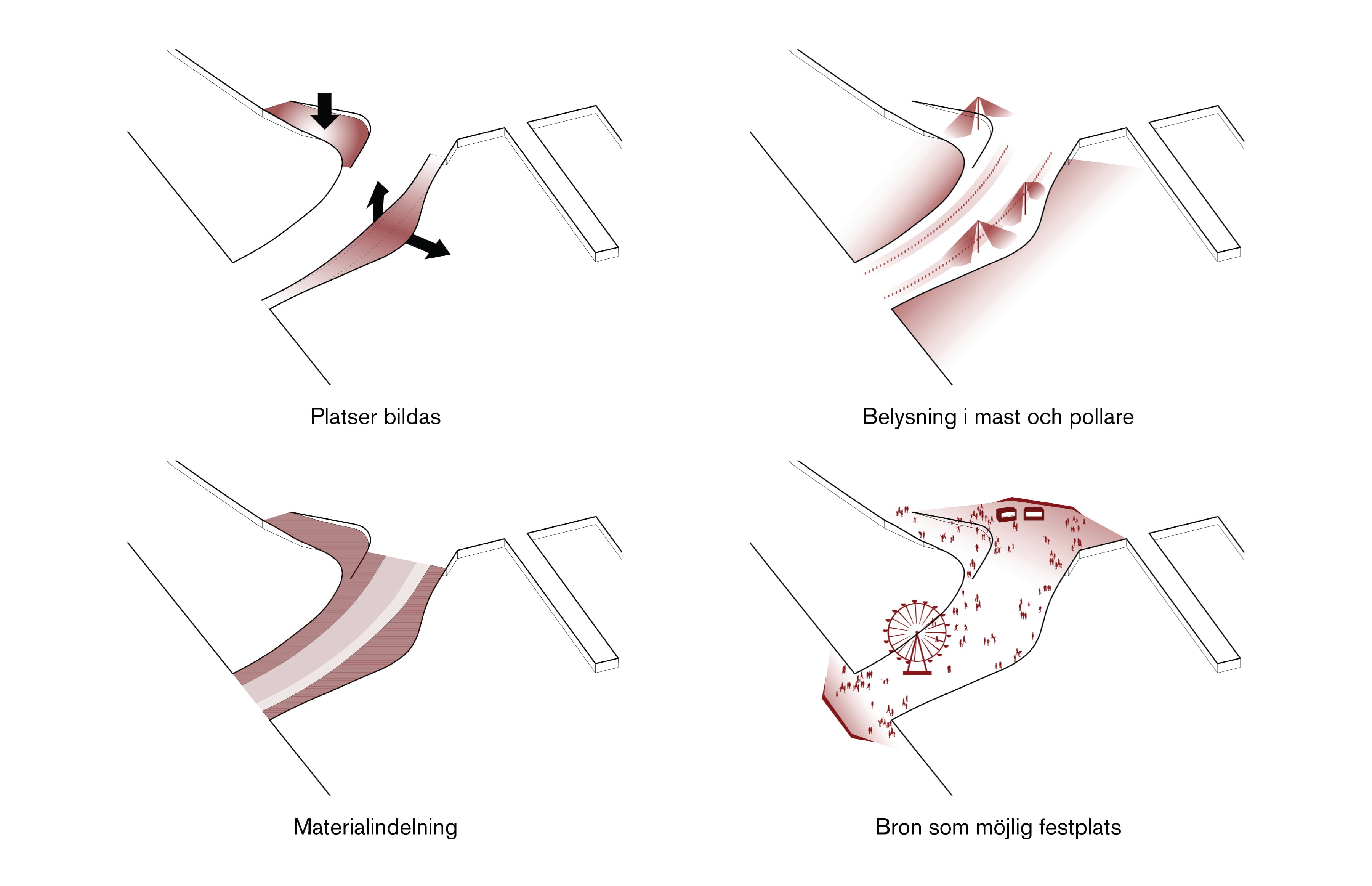
A place for movement and meetings
The flow of movement coming from Gibraltargatan to the south makes a turn and arrives to the diagonal main street in Varvstaden. Adjacent to the northern abutment, the quay is extended into the water, creating a new corner of the basin. The form of the bridge creates a widened view of the basin to the east and a new public space by the northern abutment. Inventive placemaking creates a reason to stop, sit down and observe the surroundings as well as meet, a micro destination, and a meeting place. Bollard lights are used as a safety measure, protecting pedestrians and cyclists from bus traffic, and at the same highlight the bridge as a unified, cohesive surface, thus making it more flexible, allowing for various events and temporary activities to take place. Three main zones are outlined using subtle material change, ranging from max 30km/h middle zone with bus traffic to the slow-speed strip along the outer edge for pedestrians.

Form and materiality
The point of departure for the design revolves around a strong reference to the history of the Kockum’s shipbuilding industry in terms of the form, materiality and structural approach of the new, thus strongly anchoring it in the place. The bridge has a rather subdued character, using three materials typical for shipyards and shipbuilding works – brick, metal, and wood. The main structure is made of pigmented concrete with red aggregate, decking is covered in red and brown bricks, asphalt surface has a top layer mixed with porphyry and railing details are carried out in Corten steel. Benches and seating are in wood with added tactility. The formal language inherent in the shipbuilding industry has always been, out of necessity, the streamlined hull shape with sealed surfaces. The soft curve of the bridge bulges outwards in one direction, referring to vessels built in the area during the past.

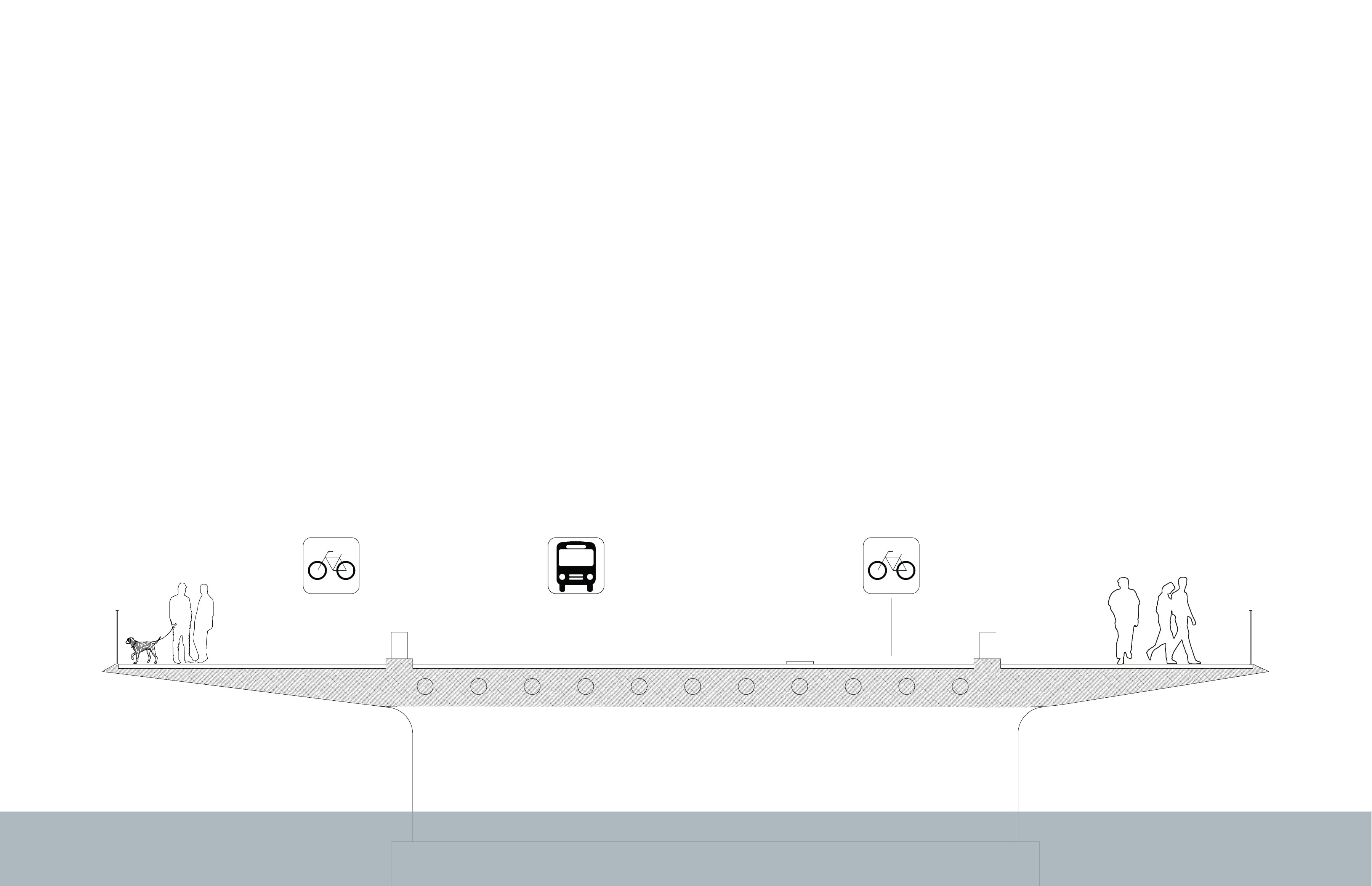
Engineering and maintenance
In combination with a robust construction from durable materials, the intended use of the bridge allows for a thinner structure. Built as a four-span bridge on three piers with round caps for support placed under the deck slab, it is a reinforced concrete girder bridge without bearing or secondary beams which is a sustainable and low-maintenance solution, providing a long life span and low investment. The deck has grooves directly above the supports to withstand the strongest bending moments and expansion and contraction.

”A bridge connecting people, history and future.”
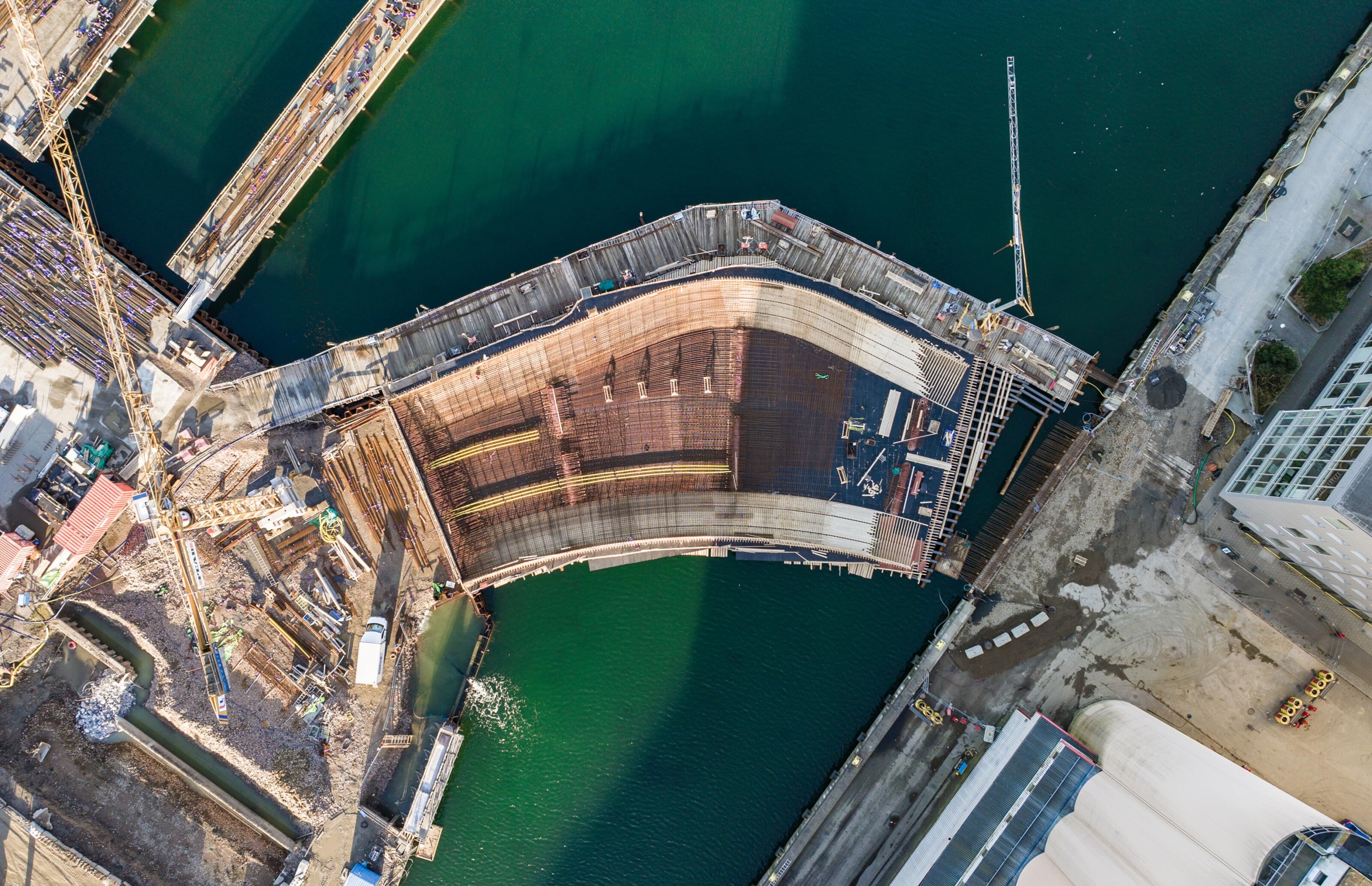
Styrmansbron in Malmö on site, February 2024
The bridge is under construction, due to be fully operational at the turn of the year 2024.
